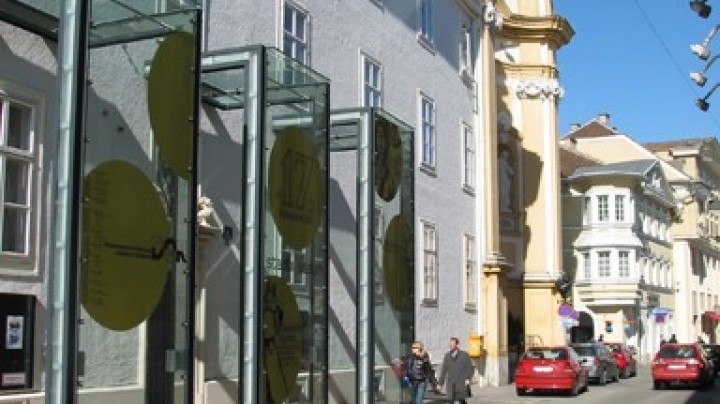
Stadtmuseum St Pölten
A modern museum in the centre of the historic city Since its re-opening in 2007, the Stadtmuseum has grown to become one of the great cultural attractions of the beautiful historic centre of St Pölten. Reconstructions included a completely barrier-free remodelling of the entrance, both inside and out, to the great advantage of people of disability. The departments The departments Archaeology, the Romans and history of the city are accessed on the ground floor as part of the tour within the ancient walls of the former Carmelite convent. The lavish show of archaeological finds from the prehistoric epochs and ancient history gives visitors a comprehensive impression of these times. Outstanding highlights from these ancient beginnings of settlement around St Pölten are: the 7000 years-old “Venus of St. Pölten” the 6000 years-old Stone Age shell jewellery a Celtic bronze sword with wondrously filigree decoration the Celtic axe nail, famed far and wide Not forgetting from Roman times the small bronze boar and the unique glass beaker History of the city Art works from earlier times cast a vivid light on the history of the city, for example: the bird’s eye view of the city by Balduin Hoyel dated 1623, “Christ as Apothecary” a very beautiful sword of a city judge of 1579. ART NOUVEAU in St. Pölten The Art Nouveau department (Jugendstil in German) shows highlights by Charlotte Andri-Hampel, Ferdinand Andri, Ernst Stöhr, Hans Ofner and Joseph Maria Olbrich. The show is a fascinating blend of paintings, graphics, sculptures and toys, also furniture and architectural designs, and has aroused much interest in connoisseur circles. In Rudolf Frass and Rudolf Wondracek St Pölten produced two important pupils of the great architect Otto Wagner. Thus it is no wonder that art nouveau has stamped its image firmly on the city’s architecture!

Wednesday to Sunday 10 am – 5 pm
The museum is open on public holidays unless they fall on a Monday or Tuesday – also excluding all the closing days listed below!
Closing days 2010: 1.1.: New Year’s Day 1.5.: May holiday 24.12.: Christmas 25.12.: Christmas 26.12.: Christmas 31.12.: New Year’s Eve










